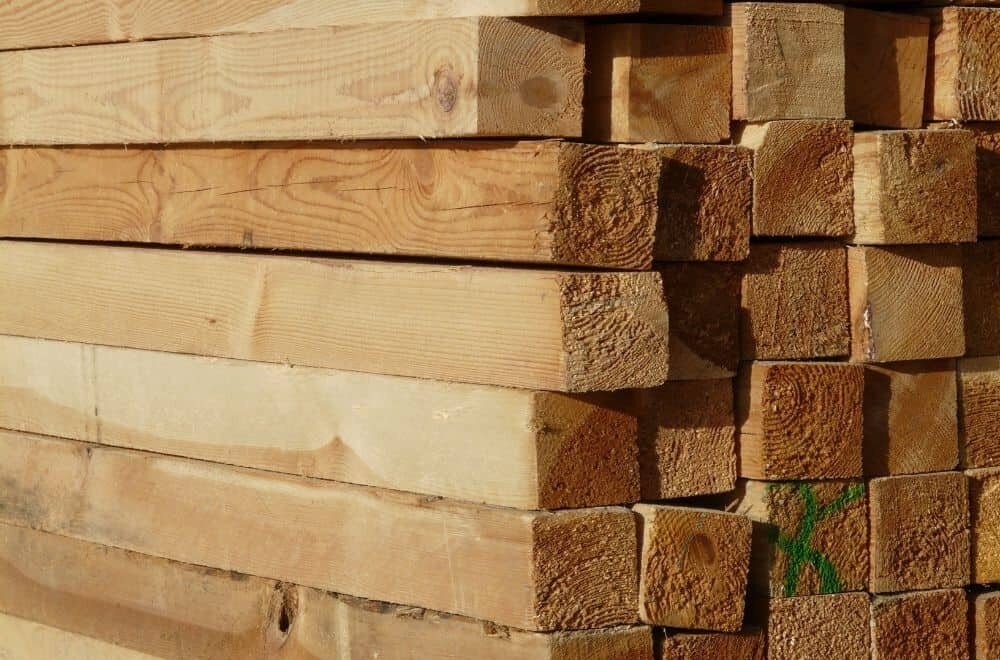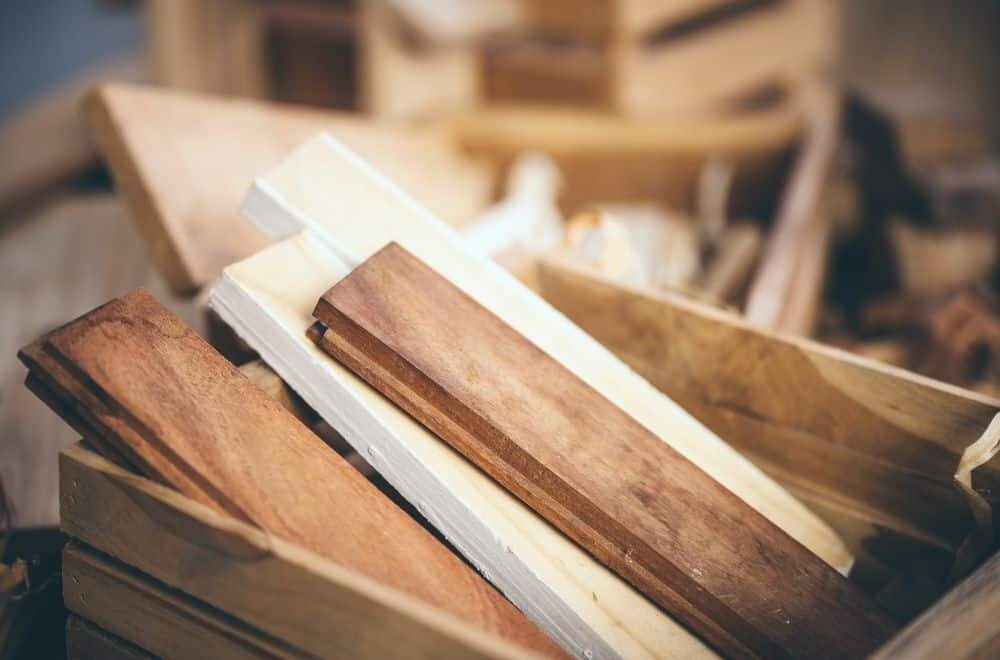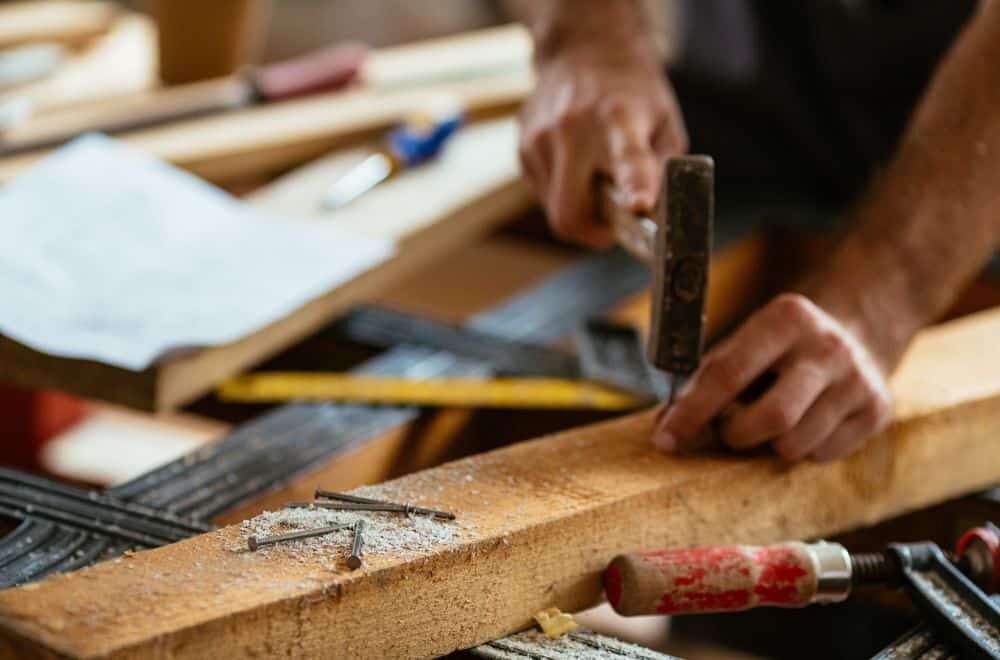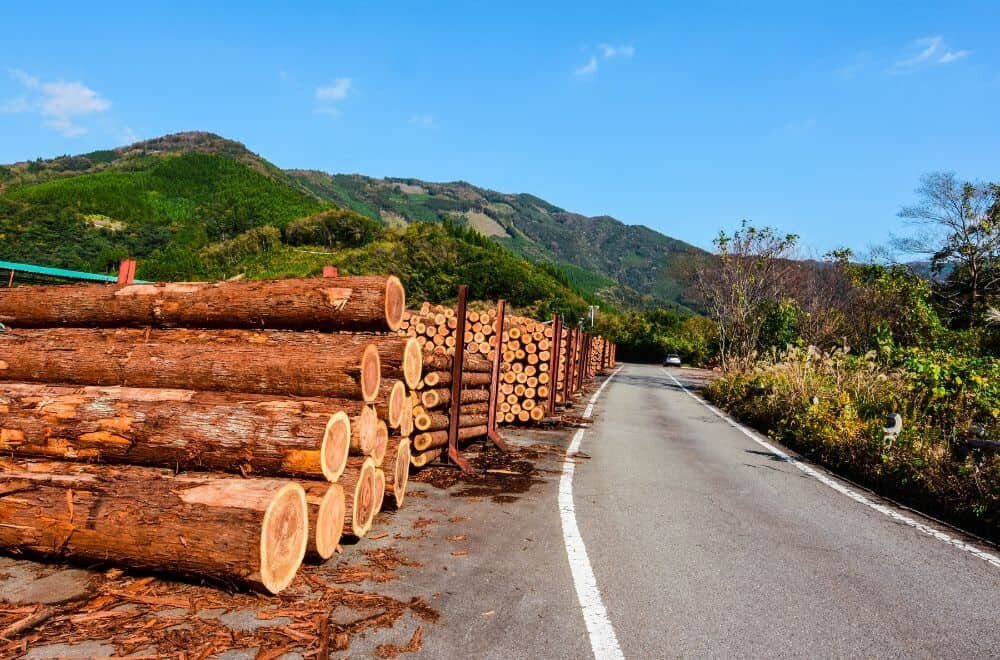Are you looking for the strongest, hardest, and most durable wood out there? Whether you’re a woodworker, builder, or simply curious about the material, knowing which type of wood is the strongest can be useful. While there’s no definitive answer to this question, there are several types of wood that are known for their exceptional strength and durability.
According to ArchDaily, some of the hardest woods in the world include Lignum vitae, Brazilian Ebony, and African Blackwood. These woods are known for their high density, which gives them their exceptional strength. However, keep in mind that the strength and durability of a wood also depend on other factors such as how it’s cut, treated, and used. In this article, we’ll explore some of the strongest and most durable woods out there and what makes them so special.
Understanding Wood Durability
When it comes to choosing the right wood for your project, durability is a crucial factor to consider. Wood durability refers to a wood’s ability to resist decay and natural forces such as weather, insects, and fungi.
One way to measure wood durability is by using the Janka hardness test, which measures the force required to embed a small steel ball into the wood. The higher the Janka rating, the harder and more durable the wood.
However, it’s important to note that hardness and durability are not always the same thing. Some woods may be hard but not very durable, while others may be less hard but highly durable.
Another factor to consider is the natural durability of the wood species. Some woods have natural resistance to decay and insects, while others may require treatment to improve their durability.
Below is a table that shows the natural durability of some common wood species:
| Wood Species | Durability |
|---|---|
| Cedar | Highly durable |
| Redwood | Highly durable |
| Teak | Highly durable |
| White Oak | Highly durable |
| Black Locust | Highly durable |
| Mahogany | Moderately durable |
| Cherry | Moderately durable |
| Maple | Moderately durable |
| Pine | Low durability |
| Spruce | Low durability |
Keep in mind that the natural durability of wood can vary depending on the growing conditions and location of the tree. It’s always best to consult with a wood expert or do your research before choosing a wood species for your project.
The Importance of Wood Density

When it comes to determining the strength, hardness, and durability of wood, density is a crucial factor to consider. The density of wood refers to the amount of mass or weight of the wood per unit volume.
A wood’s density is determined by the proportion of wood substance and void volume, as well as the content of extractives. Generally, the higher the density of the wood, the stronger and harder it is likely to be.
For example, lignum vitae is one of the heaviest and hardest woods in the world, with a density of around 1.3 g/cc. In contrast, balsa wood, which is known for its lightness, has a density of only around 0.1 g/cc.
The density of wood can also affect its durability. Denser woods tend to be more resistant to rot, decay, and insect damage than less dense woods. This is because the extractives that are responsible for the wood’s density can also act as natural preservatives.
In addition to strength and durability, wood density can also affect its workability and appearance. Denser woods can be more difficult to cut, shape, and sand, while less dense woods may be more prone to splitting or warping.
Overall, when choosing a type of wood for a particular project, it’s important to consider its density and how it will affect the wood’s strength, durability, workability, and appearance.
The Role of Wood Hardness
When it comes to determining the strength and durability of wood, hardness plays a crucial role. Hardness is defined as the measure of a wood’s resistance to indentation, and it is a key factor in determining the wood’s ability to withstand wear and tear, impact, and compression.
One of the most widely used methods for measuring wood hardness is the Janka hardness test. This test involves measuring the force required to embed a steel ball halfway into a wood sample. The Janka hardness rating is expressed in pounds-force (lbf) and is used to compare the hardness of different wood species.
According to the Janka hardness scale, some of the hardest and most durable woods include hickory, mesquite, and Brazilian walnut. These woods have a Janka hardness rating of over 2000 lbf, which means they are highly resistant to wear and tear and can withstand heavy foot traffic, furniture, and other heavy objects.
On the other end of the spectrum, some of the softest woods include balsa, pine, and poplar, which have a Janka hardness rating of less than 500 lbf. These woods are not as durable and are more prone to scratches, dents, and other forms of damage.
It’s important to note that while hardness is a critical factor in determining wood strength and durability, it is not the only factor. Other factors such as density, moisture content, and grain pattern also play a role in determining a wood’s overall strength and durability.
In conclusion, when it comes to selecting the strongest, hardest, and most durable wood for your project, it’s essential to consider the wood’s hardness rating. By choosing a wood with a high Janka hardness rating, you can ensure that your project will withstand wear and tear and last for years to come.
The Strength Factor in Wood

When it comes to wood, strength is a crucial factor to consider. The strength of a particular type of wood determines its durability and ability to withstand pressure or weight. Here are some key factors that contribute to the strength of wood:
- Density: The denser the wood, the stronger it tends to be. Dense woods have a higher concentration of fibers, making them more resistant to wear and tear.
- Moisture Content: Wood with a lower moisture content tends to be stronger than wood with a higher moisture content. This is because water weakens the structural integrity of wood.
- Grain Orientation: The orientation of the wood grain can affect its strength. Wood with straight, uniform grain tends to be stronger than wood with irregular or cross-grain patterns.
- Species: Different species of wood have varying levels of strength. Some species, such as oak and hickory, are known for their strength and durability, while others, like balsa, are much weaker.
- Age: Older trees tend to produce stronger wood than younger trees. This is because the wood fibers become denser and more tightly packed as the tree ages.
- Treatment: Certain treatments, such as pressure treatment or chemical treatment, can increase the strength and durability of wood.
Considering these factors, it’s clear that there is no one “strongest” wood out there. Rather, the strength of a particular type of wood depends on a variety of factors. When choosing wood for a particular application, it’s important to consider these factors and choose a wood that is strong enough to meet your needs.
World’s Strongest Woods
When it comes to finding the strongest, hardest, and most durable wood out there, it’s important to consider various factors such as density, Janka hardness rating, and modulus of elasticity. Here are a few of the world’s strongest woods that you might want to consider for your next project:
Australian Buloke
Australian Buloke is a hardwood that is native to Australia and is known for its incredible strength and durability. It has a Janka hardness rating of 5,060 lbf, which makes it the world’s hardest wood. It is so strong that it is often used in the construction of bridges, railway sleepers, and even knife handles. The wood is also resistant to rot, decay, and termites, making it an ideal choice for outdoor projects.
Snakewood
Snakewood is an exotic hardwood that is native to South America. It is known for its unique pattern, which resembles the scales of a snake. Snakewood is incredibly dense and hard, with a Janka hardness rating of 3,800 lbf. It is often used in the production of musical instruments, such as guitars and violins, due to its excellent tonal qualities.
Quebracho
Quebracho is a hardwood that is native to South America. It is known for its incredible strength and durability, with a Janka hardness rating of 4,570 lbf. The wood is so strong that it is often used in the production of railroad ties and fence posts. Quebracho is also resistant to rot, decay, and termites, making it an ideal choice for outdoor projects.
Lignum Vitae
Lignum Vitae is a hardwood that is native to Central and South America. It is one of the heaviest and hardest woods in the world, with a Janka hardness rating of 4,390 lbf. The wood is so dense that it sinks in water. Lignum Vitae is often used in the production of bearings, bushings, and pulleys due to its excellent wear resistance.
Schinopsis Brasiliensis
Schinopsis Brasiliensis, also known as Quebracho Colorado, is a hardwood that is native to South America. It has a Janka hardness rating of 3,840 lbf, making it one of the strongest and hardest woods in the world. The wood is often used in the production of flooring, furniture, and tool handles due to its excellent durability and strength.
In conclusion, these are just a few of the world’s strongest woods that you might want to consider for your next project. Keep in mind that each wood has its own unique properties and characteristics, so be sure to choose the one that best suits your needs.
Hardest Woods in the World

When it comes to finding the hardest woods in the world, there are a few contenders that stand out from the rest. These woods are known for their incredible strength and durability, making them ideal for a variety of applications. Here are some of the hardest woods in the world:
Australian Buloke
Australian Buloke is considered the strongest wood in the world, with a Janka hardness rating of 5,060 lbf (pounds-force). This wood is incredibly dense and heavy, making it difficult to work with, but also extremely durable. Australian Buloke is commonly used for tool handles, knife handles, and other applications where strength and durability are essential.
Snakewood
Snakewood is another incredibly hard and dense wood, with a Janka hardness rating of 3,800 lbf. This wood gets its name from the distinctive snakeskin-like pattern that appears on its surface. Snakewood is often used for high-end musical instruments, such as guitars and violins, as well as for luxury items like pens and jewelry.
Quebracho
Quebracho is a South American hardwood with a Janka hardness rating of 4,570 lbf. This wood is incredibly dense and heavy, and is known for its deep red color. Quebracho is commonly used for flooring, furniture, and tool handles.
Lignum Vitae
Lignum Vitae, also known as Guaiacum, is a Central American hardwood with a Janka hardness rating of 4,390 lbf. This wood is incredibly dense and oily, making it resistant to water and rot. Lignum Vitae is commonly used for boat building, as well as for bearings and other applications where low friction is essential.
Schinopsis Brasiliensis
Schinopsis Brasiliensis, also known as Brazilian Peppertree, is a South American hardwood with a Janka hardness rating of 3,840 lbf. This wood is incredibly dense and hard, and is known for its beautiful red color. Schinopsis Brasiliensis is commonly used for flooring, furniture, and tool handles.
When it comes to finding the hardest woods in the world, these are just a few of the many options available. Whether you’re looking for strength, durability, or beauty, these woods are sure to impress.
Most Durable Woods
When it comes to finding the most durable wood, there are a few species that stand out from the rest. These woods are known for their strength, hardness, and ability to resist decay and damage from the elements. Here are five of the most durable woods you can use for your next woodworking project:
Ipe
Ipe is a hardwood that is native to South America. It is known for its extreme hardness, which makes it resistant to scratches, dents, and other types of damage. Ipe is also highly resistant to decay, insects, and other environmental factors, which makes it an excellent choice for outdoor projects like decks, fences, and furniture.
Teak
Teak is another hardwood that is known for its durability. It is native to Southeast Asia and is often used for outdoor furniture, boats, and other applications that require resistance to moisture and decay. Teak is also resistant to insects and other pests, which makes it a popular choice for outdoor projects.
Black Locust
Black locust is a hardwood that is native to North America. It is known for its strength and durability, and is often used for fence posts, outdoor furniture, and other applications that require resistance to decay and insects. Black locust is also resistant to fire, making it a popular choice for areas that are prone to wildfires.
White Oak
White oak is a hardwood that is native to North America. It is known for its strength and durability, and is often used for flooring, furniture, and other applications that require resistance to wear and tear. White oak is also highly resistant to decay and insects, which makes it a popular choice for outdoor projects like decks and fences.
Cedar
Cedar is a softwood that is native to North America. It is known for its natural resistance to decay, insects, and other environmental factors, which makes it an excellent choice for outdoor projects like fences, decks, and furniture. Cedar is also lightweight and easy to work with, which makes it a popular choice for DIY projects.
Overall, these woods are some of the most durable and long-lasting options you can choose for your woodworking projects. Whether you’re building outdoor furniture, decking, or other structures, these woods will provide you with the strength and durability you need to create a lasting and beautiful finished product.
Factors Affecting Wood Durability

When it comes to wood durability, there are several factors that come into play. Here are some of the key factors that can affect the durability of wood:
1. Hardness
The hardness of wood is an important factor in determining its durability. Hardwood species are generally more durable than softwood species due to their higher density and strength. The Janka hardness test is a widely accepted measure of wood hardness, which involves measuring the force required to embed a steel ball halfway into the wood.
2. Moisture Content
The moisture content of wood is another important factor in determining its durability. Wood with high moisture content is more prone to rot, decay, and insect infestation. On the other hand, wood with low moisture content is more resistant to these issues.
3. Density
The density of wood is closely related to its hardness and strength. Dense woods are generally more durable than less dense woods. The denser the wood, the less likely it is to warp or crack over time.
4. Grain Orientation
The orientation of wood grain can also affect its durability. Wood with straight grain patterns is generally more durable than wood with irregular or spiral grain patterns. This is because straight-grained wood is less likely to split or crack over time.
5. Natural Resistance
Some wood species are naturally more resistant to rot, decay, and insect infestation than others. For example, cedar and redwood are well-known for their natural resistance to decay and insect damage.
6. Treatment
Wood can be treated with various chemicals to improve its durability. Pressure-treated wood, for example, is treated with preservatives to protect it from rot, decay, and insect damage. However, it’s important to note that treated wood can still be susceptible to weathering and other forms of damage over time.
By considering these factors, you can choose the most durable wood for your project and ensure that it will last for years to come.
Choosing the Right Wood for Your Needs
When it comes to choosing the right wood for your project, there are several factors to consider. The strength, durability, and hardness of the wood are some of the most important things to keep in mind. Here are some tips to help you choose the right wood for your needs:
Consider the Purpose of Your Project
The first thing you need to consider is the purpose of your project. Are you building furniture, constructing a building, or creating a decorative piece? The type of wood you choose will depend on the purpose of your project. For example, denser woods like oak and maple are great for furniture and building, while less dense woods like pine and cedar are better for decorative pieces.
Look at the Wood’s Properties
The properties of the wood, such as texture, color, and density, can also play a role in your decision. Texture determines the condition of the surface and its stability, while color determines the look and style of your project. If the wood won’t be visible, color won’t matter much to your selection process. Density is a wood’s weight and strength. The denser the wood, the sturdier the result of your project.
Consider the Janka Hardness Rating
The Janka hardness rating is a measure of the wood’s hardness and durability. It is determined by the amount of force required to embed a steel ball halfway into the wood. The higher the rating, the harder and more durable the wood is. Some of the hardest woods in the world include Australian Buloke, Baraúna, and Quebracho.
Choose the Right Grade
Finally, you need to consider the grade of the wood. The grade refers to the quality of the wood and can affect its strength, durability, and appearance. The higher the grade, the better the quality of the wood. For example, select grade wood is the highest quality and has the fewest defects, while common grade wood has more defects and may not be as strong or durable.
By considering these factors, you can choose the right wood for your project and ensure that it is strong, durable, and long-lasting.
Frequently Asked Questions
What are some of the hardest woods available for building?
Some of the hardest woods available for building include hickory, maple, oak, and ash. These woods are known for their durability and strength, making them ideal for construction projects.
What is the strongest wood species in the world?
The strongest wood species in the world is generally considered to be Australian Buloke, also known as Ironwood. This wood is incredibly dense and hard, making it resistant to wear and tear.
What is the hardest wood to cut with a chainsaw?
The hardest wood to cut with a chainsaw is generally considered to be ironwood. This wood is incredibly dense and hard, making it difficult to cut through with a chainsaw.
What is the most durable wood for outdoor use?
The most durable wood for outdoor use is generally considered to be teak. This wood is naturally resistant to water, insects, and decay, making it ideal for use in outdoor furniture and decking.
What are some of the densest woods available?
Some of the densest woods available include lignum vitae, quebracho, and African blackwood. These woods are incredibly hard and dense, making them ideal for use in high-stress applications.
What is the strongest wood for furniture making?
The strongest wood for furniture making is generally considered to be hard maple. This wood is incredibly strong and durable, making it ideal for use in furniture that will be subjected to heavy use.